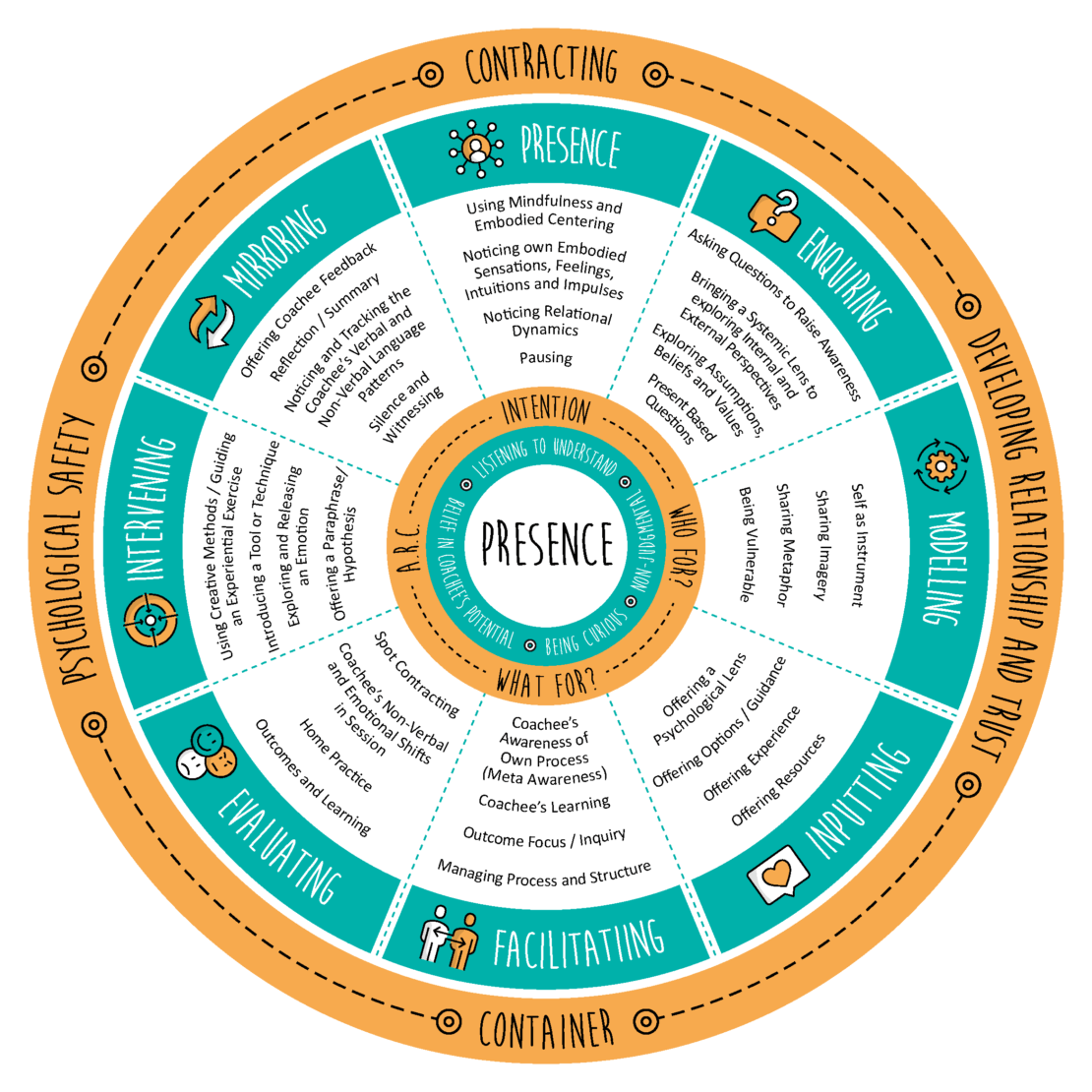At the Heart of the Transformational Coach

“Do you have the patience to wait
Lao Tzu
Til your mud settles and the water is clear?
Can you remain unmoving
Til the right action arises by itself?”
Our Transformational Coach Framework (which you’ll find at the end of this blog post) provides you with a map of the being and doing of a Transformational Coach.
When Catalyst 14 describes coaching as ‘transformational,’ we mean a way of working with a client that moves beyond the surface of the presenting topic.
It fundamentally impacts on all of ‘who they are’. It enables coachees to have a different relationship with themselves in how they see, think, feel and behave in situations — as well as in their interactions with others.
Behaviour shifts are important if coachees are to sustain the changes identified in the coaching session; however we believe that long term, sustainable change occurs when an individual looks at a challenge or situation with a different mindset: a different relationality.
Transformational coaching works at the level of beliefs, values, identity and purpose – it creates and sustains this long-term change. Fundamentally, the coachee experiences the change in the coaching session through an energetic / embodied shift.
Our Transformational Coach Framework also visually describes the 2-year journey of our courses, moving from the outside (doing to being) during Year 1 and then Coach Mastery in Year 2, where we deepen the coach’s maturity from the inside out (being to doing).
At the heart of our model is the coach’s presence, which will be no surprise to the coaches that train with us.
We describe this as follows:
“Transformational Coaching Presence is being fully embodied and responsive to the present moment in a centered and compassionate way.”
Our definition suggests that this awareness and relational presence is not neutral and detached, it is imbued with the qualities of mindfulness practice.
By undertaking formal mindfulness training, these attitudes deepen our embodied understanding of mindfulness, which is often described as having 2 wings:
- Present moment awareness
- The other is Kabat-Zinn’s 9 key principles of mindfulness.
They come together in each moment in terms of how we are meeting and relating to our experience. This way of being and relating with our internal experience and external relationships is coloured with balance, equanimity and compassion.
“In Asian languages, the word for ‘mind’ and the word for ‘heart’ are same. So if you’re not hearing mindfulness in some deep way as heartfulness, you’re not really understanding it. Compassion and kindness towards oneself are intrinsically woven into it. You could think of mindfulness as wise and affectionate attention.”
Jon Kabat-Zinn
As discussed above, this quality of attention and being as a coach does not come by chance; it develops over time from the discipline of a daily practice. If we are the greatest instrument for change, we need to be like a professional musician tuning and taking care of their instrument daily.
Over recent years, this has become an even more important cornerstone of our work as there is immense stress, exhaustion and burn out in the field we are working within. Without practices in place to resource us, it is likely we will be worn down and become reactive to our coachee’s content and context.
When we are fully resourced, available and present, our transformational presence can down regulate the coachee’s stress response (which is often how they arrive to a session), soothing and calming their internal system within the coaching session.
So how do we create transformational presence?
We need to think of this as a muscle: the more we practice, the greater strength and capacity we build. Our bodies learn from repetition, and through ongoing practice this state of embodied presence becomes a trait: a characteristic of our presence as a coach.
In this way we are open, receptive and fully available to our client rather than leaving things to chance (when our less skilful parts often make an appearance).
“We are what we repeatedly do”
Aristotle
It is through our daily formal practice of mindfulness and centering that we develop an ability to manage our inner game, scanning our inner landscape — an ‘inner listening’ that helps us notice our reactive patterns, unhelpful habits and when we are prone to move into autopilot, which all pull our attention away from the immediacy of the coaching experience.
Formal practice develops our presence in several ways.
- It enables us to shift out of autopilot and orientate to the immediacy of coaching in a present, alert and balanced way.
- We learn what enables us to stay resourced, aligned and connected to ourselves and the coachee when in relationship.
- We know deeply our reactive patterns and how to recognise these in the body through somatic markers.
- Knowing our body is the gateway to presence, we fully understand that when we are in the grip of a reactive pattern it is not something we can control through our thinking, so we learn to drop our attention into the body to pause, ground and come back to center.
- Through ongoing practice, we develop strong sensory anchors that enable us to ground our attention and centre quickly before, during and after the coaching session (the feet, the felt sense of contact with the chair, our hands resting in our lap and the breath) and then to move into a more expanded awareness of the field.
- We become more intentional of how we want to be as a coach — consciously embodying qualities (e.g. ease and flow) rather than unconsciously embodying something less helpful.
To learn more about the grounding practice that we can use as a Coach before a coaching session, please see our blog post on grounding exercises for coaches.
“After observing O Sensei sparring with an accomplished fighter, a young student said to the master, ‘You never lose your balance. What is your secret?’
‘You are wrong,’ O Sensei replied. ‘I am constantly losing my balance. My skill lies in my ability to regain it.’”
(Anonymous)
As coaches, we know how challenging it can be to sustain a deep presence when relating to another in the coaching session and this is even harder if we’ve not had the time to build this capacity through our ongoing daily practice. Without practice this it will be very hard to notice and catch ourselves in the moment.
To help coaches that train with us sustain a Transformational Coaching Presence, we introduce them to a interpersonal mindfulness practice of 50:50 awareness – this involves practising keeping at least 50% of their attention to inner listening, the field of their own body and mind, and giving a full 50% to the ‘relational field’ of connection with the coachee.
Through ongoing practice, they develop strong awareness of their reactive pattern during the coaching session by observing their midline and the breath.
Then in the session, when impacted, e.g. pulled into the content or ‘rescuing’ when they notice the felt sense of reactivity, they learn to simply pause, take a conscious breath, sense their body and ground, let go and reconnect with their intention to stay embodied; open to the coachee; and available with attitudes of non-judgement, openness and compassion.
“The success of an intervention depends on the inner condition of the intervener.”
Bill O’Brien, former CEO of Hanover Insurance

To support your inquiry and practice to further deepen your presence as a Coach, you’ll find some additional video resources on this topic below.
Webinar: Self as Instrument
Webinar: Embodied Coaching
Webinar: Self Care for Coaches
Get Free Coaching and Mindfulness Resources
Join our community for free and get a host of free resources, including our guide to becoming a professional coach, access to our coaching webinars, a free mindfulness e-kit and much more.



